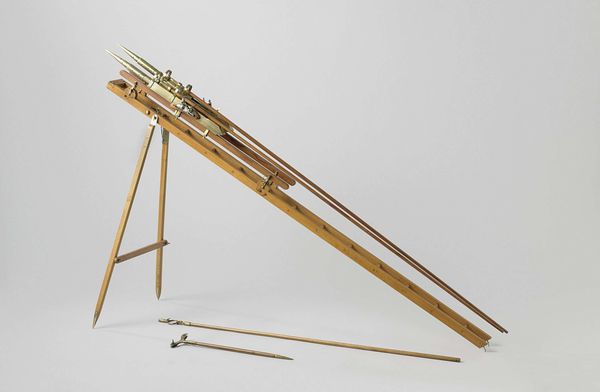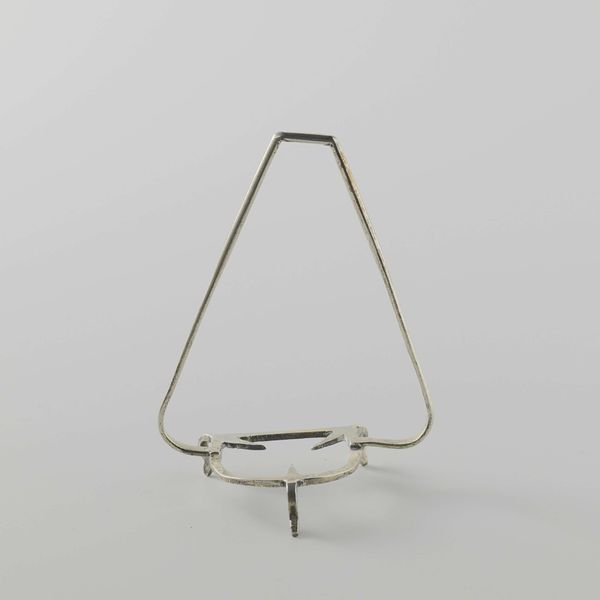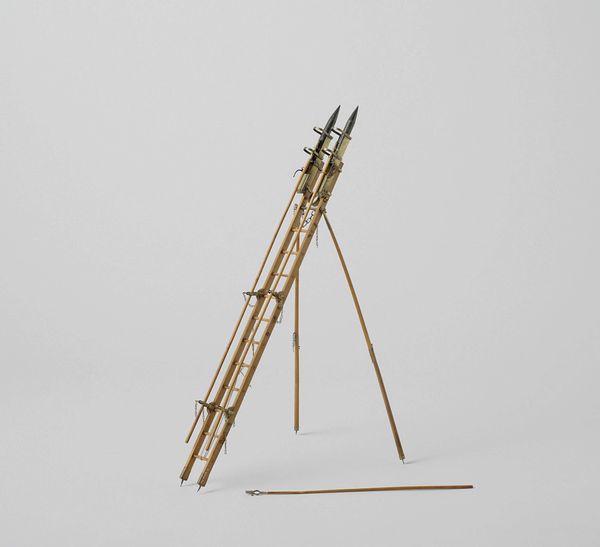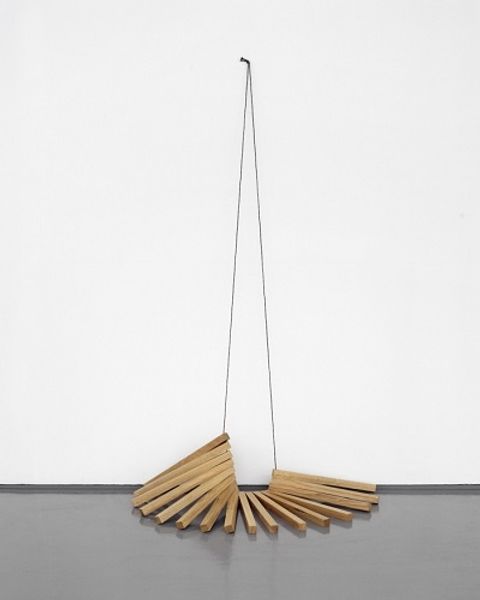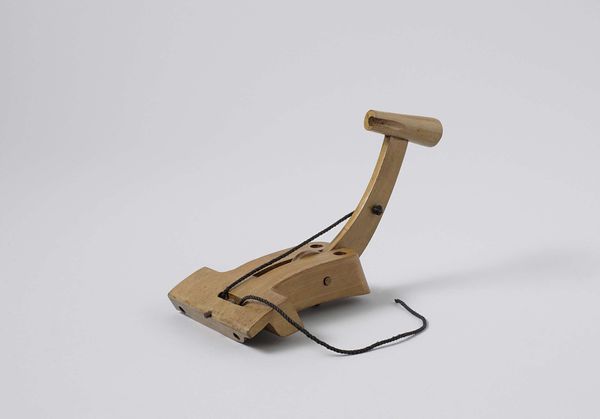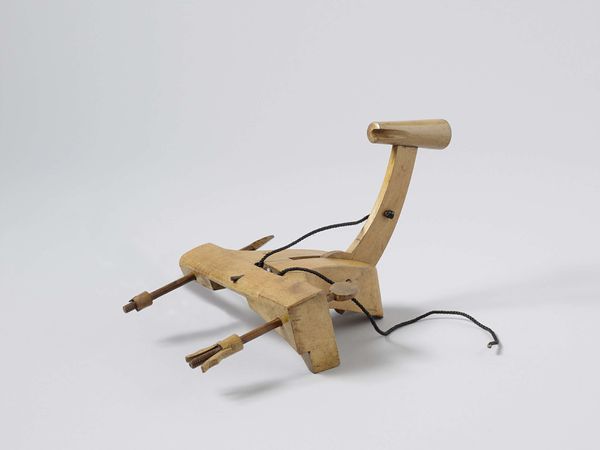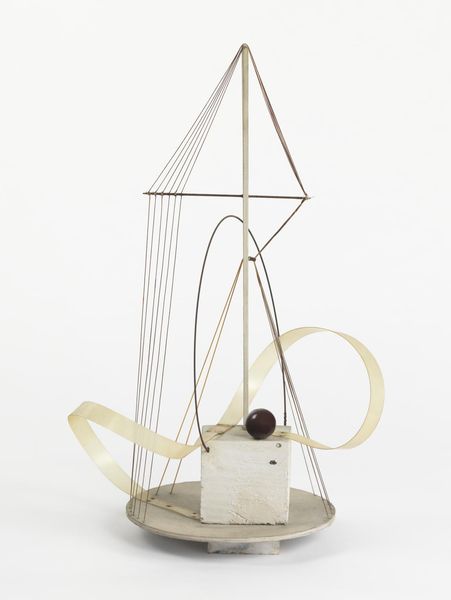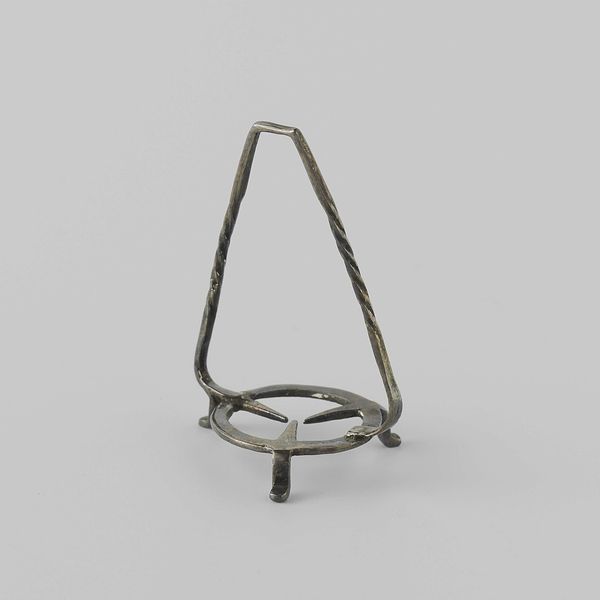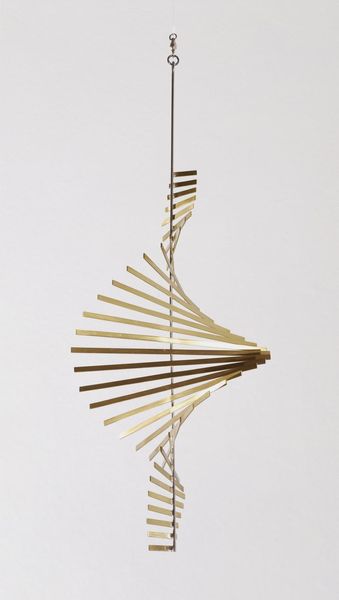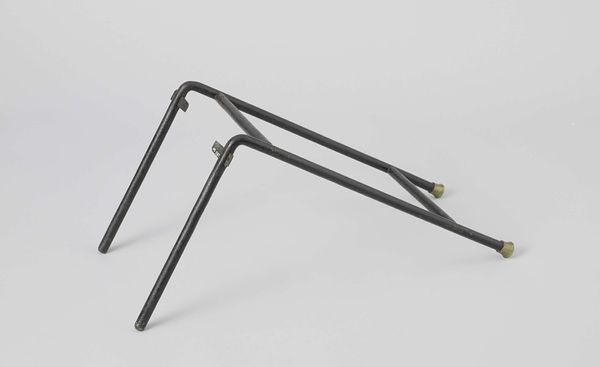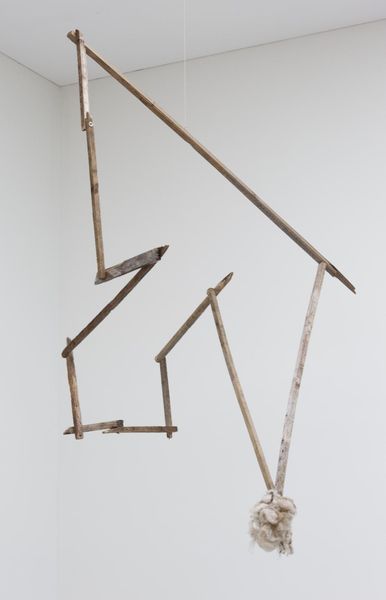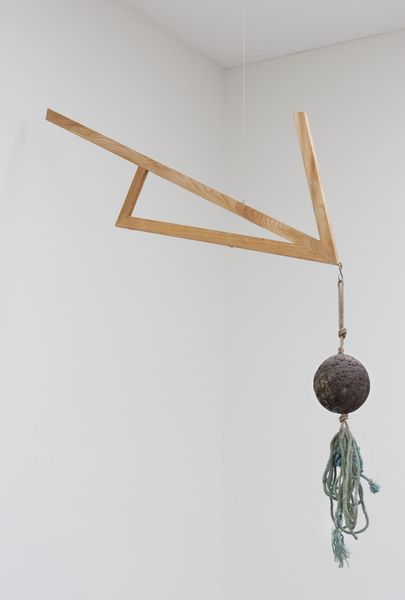
mixed-media, metal, wood
#
mixed-media
#
metal
#
geometric
#
wood
Dimensions: height 24 cm, width 30.5 cm, depth 12 cm
Copyright: Rijks Museum: Open Domain
Curator: I’m struck by the inherent tension in this sculpture—a machine designed for compression, made delicate, almost vulnerable, in miniature. Editor: Exactly! Let's unpack that. We’re looking at "Model of a Pile Driver" created in 1855 by Petrus van der Loo. Constructed with wood and metal, it reflects a period of immense industrial advancement and, I think, the societal anxieties intertwined with it. Curator: Anxieties? To me, the emphasis lies in its geometric purity—the compelling interplay of line, plane, and negative space. Consider how the bare materiality elevates its function. The structure stands naked for us, highlighting the machine's abstract aesthetic qualities, rather than celebrating labor or engineering. Editor: But it's impossible to separate that aesthetic from its historical role! The mid-19th century was marked by monumental construction projects—railways, bridges—often fueled by exploited labor and exacerbating existing class divisions. Doesn't the model inadvertently comment on this dynamic? It reduces the brutal, messy reality of industrial labor to this pristine, manageable form. A kind of bourgeois taming of the worker. Curator: I appreciate your sociopolitical interpretation; however, consider how the artist directs our gaze. The model is rendered almost diagrammatic; the use of primary shapes gives order, rhythm, clarity. Notice that diagonal thrust of the pile driver itself. It embodies function in such an elegant manner. This is less about social realism and more about revealing the essential geometry of mechanical power. Editor: Perhaps. Though it strikes me that there is a disturbing detachment in isolating the elegance from the very real societal impact of these machines. This model also reminds us that these feats were enabled at an immense cost to both human rights and the environment. It prompts difficult questions about who profited, who suffered, and the legacies that remain. Curator: I’ll concede that van der Loo's design provides fertile ground for discourse. This highlights just how multifaceted an object it truly is. Editor: Precisely. It's through grappling with those contradictions that art can spark new understandings.
Comments
No comments
Be the first to comment and join the conversation on the ultimate creative platform.
